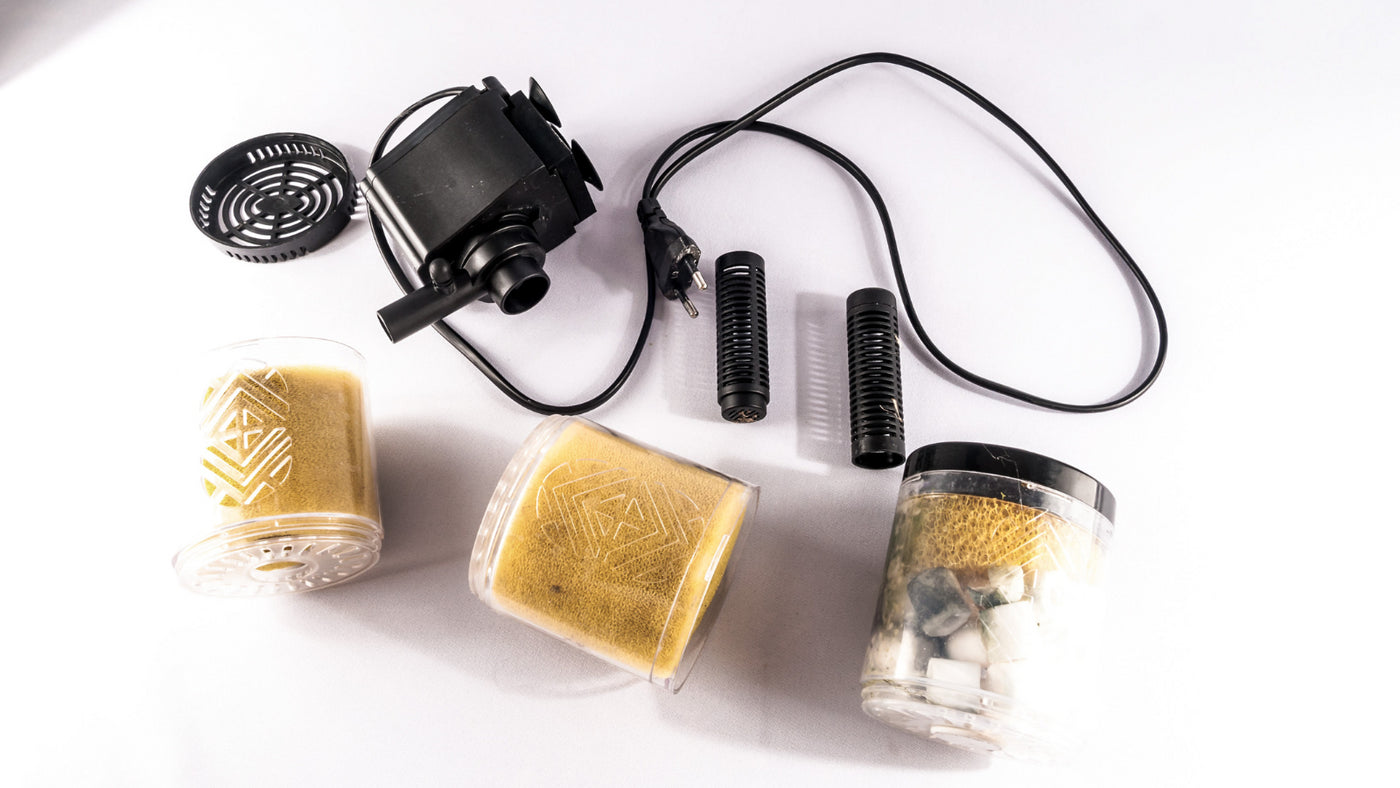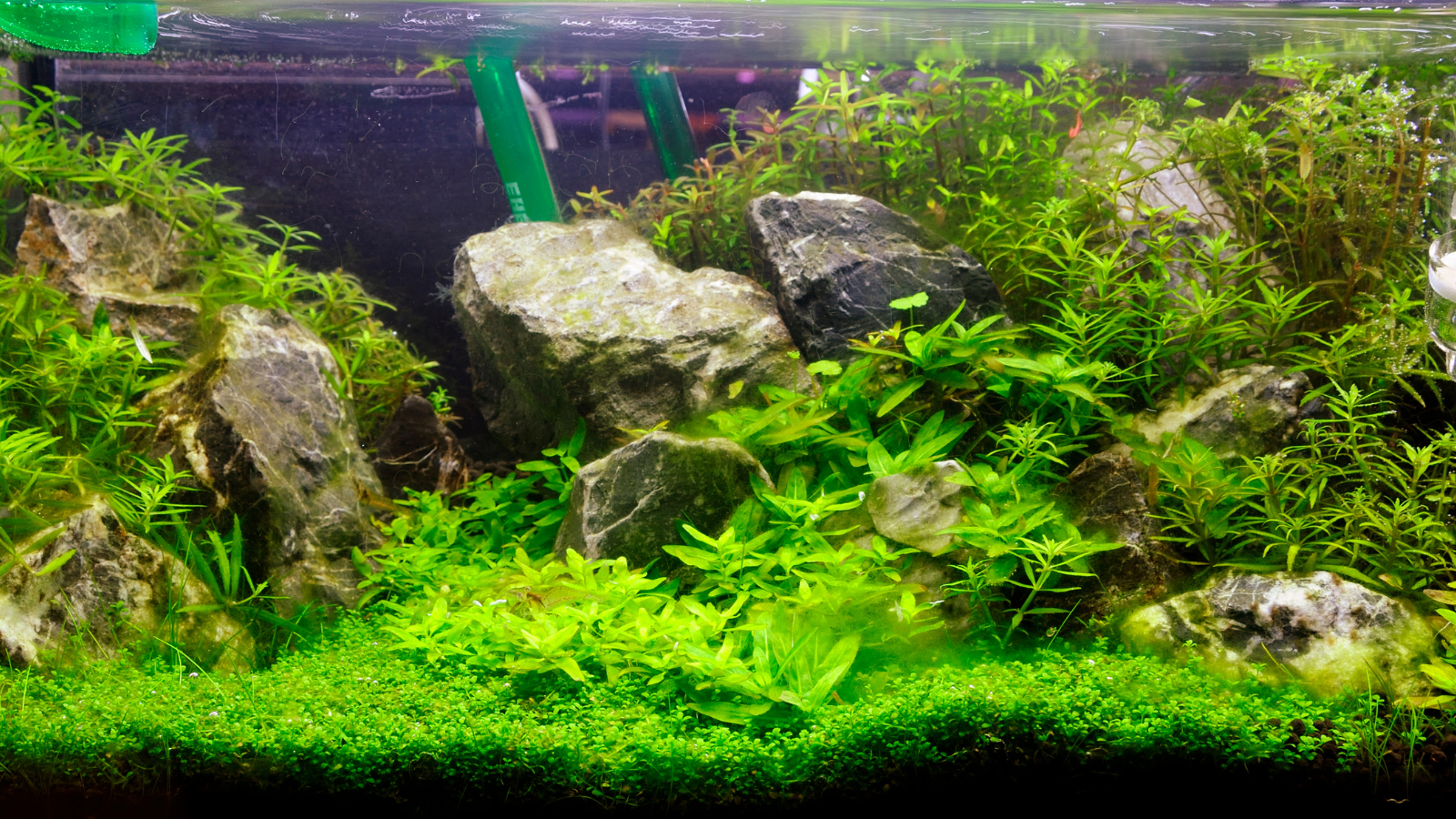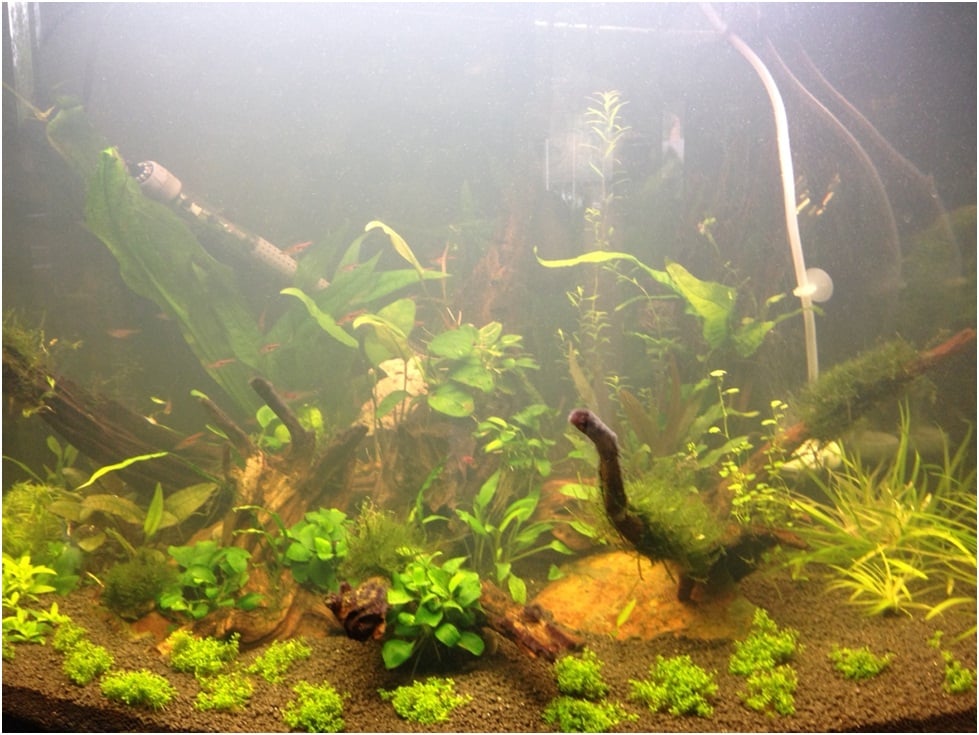
Understanding the aquarium filtration system
Understanding the basics of planted tank maintenance is necessary for the aquarium hobby. We must know that fish and other livestock inhabiting a planted tank will produce substances that contaminate the aquarium. Fish and other fauna produce toxic ammonia through excrement and respiration. Additionally, aquarium plants create this through decomposing leaves. A milligram of this poisonous substance per litre of water would easily wipe out all the tank's inhabitants. Nitrites, Nitrates, and other elements will also be present in the aquarium water, which could equally be as lethal in the right amounts. Understanding the process surrounding removing these toxic nitrogen compounds and fish waste from the water should be at the top of the list regarding aquarium maintenance.
Providing an aquarium filter that successfully removes these toxic compounds while circulating the aquarium water correctly simultaneously is vital. Installing a suitable aquarium filter reduces weekly maintenance time by about 50%. It ensures stable water parameters, significantly contributing to the overall well-being of everything living in the aquarium.
The process of aquarium water filtration can be divided into three stages.
-
Mechanical filtration - Your filter removes the solid particles in your aquarium water column. These particles can cause an increase in ammonia levels, not to mention the other nitrogen compounds. These particles include fish waste, decaying leaves from aquatic plants, and other decaying organic debris, such as uneaten food.
-
Biological filtration - During this stage, the aquarium filter converts ammonia, Nitrate, and other compounds into less toxic substances which are less harmful to your aquarium inhabitants. Additionally, these substances can be utilised by aquatic plants.
-
Chemical filtration - Your aquarium filter will remove certain chemicals that might be present in the fish tank's water.
Apply these stages correctly, and any aquarium filtration system will create a safe and crystal-clear environment, perfect for showcasing your beautiful aquascape. Let's look at each step in more detail.

Mechanical filtration
Any material placed inside your filter chamber acts as a filter medium. An air pump or power filter will help filter out debris or solid particles as water flows through you. When considering filtration systems, the best filter for your setup should have a reasonable flow rate for the size of your aquarium. Mechanical filtration media is not only used to collect debris and prevent it from returning to your aquarium. It also protects the biological and chemical filters from being covered with decaying organic compounds. For this reason, it should always be placed in front of all other media or filter cartridges. When applied correctly, your aquarium filter can remove up to 75% of the organic compounds before the water travels to the second phase.
Correctly positioning your mechanical filtration will reduce the maintenance and prolong the life of your biological filter.
This filtration phase is versatile and can be anything from a few layers of filter wool to multiple chambers with various sponges. External power filters, or canister filters, are great for mechanical filtration. They are designed to allow the user to use different media types. That being said, the smaller internal power filters offer a selection of filter cartridge options for the same purpose.
The most popular (and most effective) mechanical filters are sponges or wool/filter pads with varying degrees of density. This particular type of material is very effective in acting as a barrier. The surface area allows enough water to flow while blocking solid waste according to density. The beauty of sponges is the wide variety of thicknesses. Coarse filter pads with large pores are perfect for large aquariums with bigger fish as they can handle more significant amounts of solid waste without clogging.
Sponge filter media with a denser and closer network of pores can be placed behind the coarse sponge filter media. This will effectively catch the tiny particles too small to be filtered out by the coarse sponge at the first stage.
Sponge filters work great, especially in smaller aquariums. They function as both biological and mechanical filters. While not as efficient as chemical and biological filtration systems, the tiny pores within the sponge are ideal for beneficial bacteria colonies, compensating for their low capacity to filter bigger waste particles. This filter is perfect for polishing aquarium water if used properly. A bonus when using sponge filters in breeding tanks is that the bacteria that form on the sponge's surface provide a food source for baby fish.
Biological filters
Billions of bacteria live in home aquariums that will eat ammonia and convert it to Nitrite. A different kind of bacteria eats the still toxic Nitrite and converts it to the less toxic Nitrate. This is called the Nitrogen Cycle. Aquarists employ nature's nitrogen cycle to keep their aquarium water clear, healthy and happy.
Biological filtration media houses beneficial bacteria within aquarium filters. You can find nitrifying bacteria living on almost any surface. These bacteria are known as Aerobic types because they need to have oxygen. Because of this, they must be housed in an aquarium area that receives a high level of water flowing through it. The most common place to harbour bacteria like this is inside the aquarium filter. They receive oxygen from the passing water while consuming ammonia and nitrates. The Nitrogen Cycle happens everywhere in freshwater aquariums. Still, it should mostly occur when the water passes through the filtration system.
Ceramic ring filter media is designed to take up less space while offering maximum surface area for bacteria to colonise and get to work. The ceramic ring is designed to allow total water flow through the chamber. Of course, dozens of products are out on the market, so when selecting media, it should be porous and allow the water to flow through.
It generally takes about three weeks or more for beneficial bacteria to establish themselves in a freshwater planted aquarium. It is, therefore, essential for newly planted aquariums to have less livestock during this time. Fluctuations of Ammonia and Nitrite are not uncommon and all part of the usual "cycling" stage. Introducing bacteria into a new aquarium help speed up this process, and there are a lot of products available which are designed for this purpose alone. This can also be achieved by placing filter media from an old, fully established fish tank into the new filter. You can quickly introduce a colony of good bacteria and help your fishtank to develop itself without the cost of purchasing any products.
Chemical filtration
There are only two effective materials commonly used in aquariums regarding chemical filtration. However, both will absorb almost anything from the water column.
The most popular chemical filtration material is activated carbon. It doesn't come much better when absorbing capacity and availability. Placing some activated carbon in the last chamber of the aquarium filter is always recommended for a newly set up planted aquarium.
Another material is called Synthetic absorbent resins, which are gaining in popularity. One of their best features is handy as they can be recharged, meaning they can still be reused. In contrast, activated carbon must be discarded after a few months.
Other methods involve adding more chemicals into the water to eliminate unwanted compounds. It is always best to attempt a more natural removal process. Adding more chemicals to remove other chemicals creates too many variables.
The regular water change
With time, certain elements would inevitably build up in the aquarium water. The simple solution is regular water changes of 30%-60% of the volume of the aquarium. Doing 100% water change would risk the fish going into shock. Doing less than 30% does not do much to your tank. Learn to love the weekly water changes, which could mean the difference between success and failure.
The cleaning up crew
Sometimes, aquarium filters installed in our fish tank are insufficient. Then the aquarium cleaning-up crew is very welcome. It's worth putting some algae-eating fish or snails to control the algae growth better. Some fish species eat different algae, e.g. young individuals Black Molly are most interested in blue-green algae. Look for other species in our BLOG describing the best animals to control the algae growth.
Summary
To sum up, if you're a beginner to planted tanks, understanding the filtration system is the critical factor which affects the entire tank. We hope that if you plan to set up your first planted aquarium, this article helped you understand the aquarium's filtration process.


